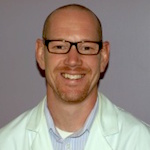The hospital system I work for has an ED and two Urgent Care Centers (UCCs) in the same city. Between the two UCCs, we serve all payer populations so that everyone in the community can access urgent care services when needed. In this way, we try to be highly available for everyone who needs immediate care. At the same time, we have also made the decision to have limited testing facilities in the urgent cares and to focus them on particular patient populations. While our UCC set up is not the standard, the results have been beneficial for both patients and the hospital.
Our first UCC is referred to as the Community Clinic. It is located in a very accessible area and provides care predominantly to underserved patients who have no insurance and who are at risk for slipping through the cracks. This center is staffed by mid-level providers and is subsidized by the hospital system so that it can treat all comers regardless of whether they can pay for services. At times, patients use the community clinic for primary care services, and while the UCC is not an ideal supplier of primary care medicine, it does provide important preventative services. Patients will also occasionally receive follow-up care after hospitalizations if needed. The goal here is that patients released from the hospital are hopefully less likely to return to the ED. Just as Steven Larsen, MD describes at his UCC, even in cases where the UCC receives no payment, the hospital system as a whole can experience a net financial gain. We see a financial gain here in two ways: the UCC services are significantly less expensive to the hospital than equivalent care provided in the ED, so treating patients in the UCC reduces financial losses to the hospital. Secondly, our hospital readmission rate is going down and thus our hospital system is avoiding penalties for readmission imposed by Medicare.
Our other UCC is staffed by Emergency Physicians and requires patients to have health insurance or pay out of pocket for their services. This center also provides two types of financial gain to the hospital system. Again, the cost of services there is less than it would be in the ED. On top of that, patient payments provide the health system with a revenue stream as well.
I like to think that these two clinics do more by doing less. By saying that they do more, I mean that this hospital can give more patients immediate care than other hospital systems can. We can do this because they have two locations in accessible areas which are set up to provide efficient care for all who need it. By saying that we also do less, I mean that these UCCs provide only limited testing. For example, we offer urine testing but do not do blood tests. By focusing only on services that are strategically necessary, we create a cost savings which allows us to provide the community with a more convenient and less expensive option for urgent care than the ED can offer.
These centers have been on the cutting edge of cooperation in the Acute Care Continuum. A clinical trial currently being started in Switzerland and listed by NIH, Optimizing Triage and Hospitalization In Adult General Medical Emergency Patients: the TRIAGE Study, is setting out to develop an algorithm that can be administered in the ED to predict a patient’s post-acute needs. We have identified three of the top diagnoses in our ED— congestive heart failure, pneumonia and diabetes—and have been targeting patients with these diagnoses to decrease these readmission rates. The UCC is one of many examples we are working with to improve patient care and decrease readmission rates. By transitioning these patients to post-acute care in the UCC, this program is attempting to reduce thirty-day readmissions to the hospital, an outcome that helps the hospital avoid the financial penalties that are imposed for such readmissions by the Affordable Care Act. Of these top three diagnoses, heart failure is the major one. Under our new program, the hospital identifies patients with heart failure and sends them for post-acute follow-up to a UCC. The UCC then makes sure that the patients take the medications they need and also get the proper home health regimes in place. This is an example of UCCs branching out into post-acute care and primary care, to more effectively serve the needs of patients across the Acute Care Continuum.






















